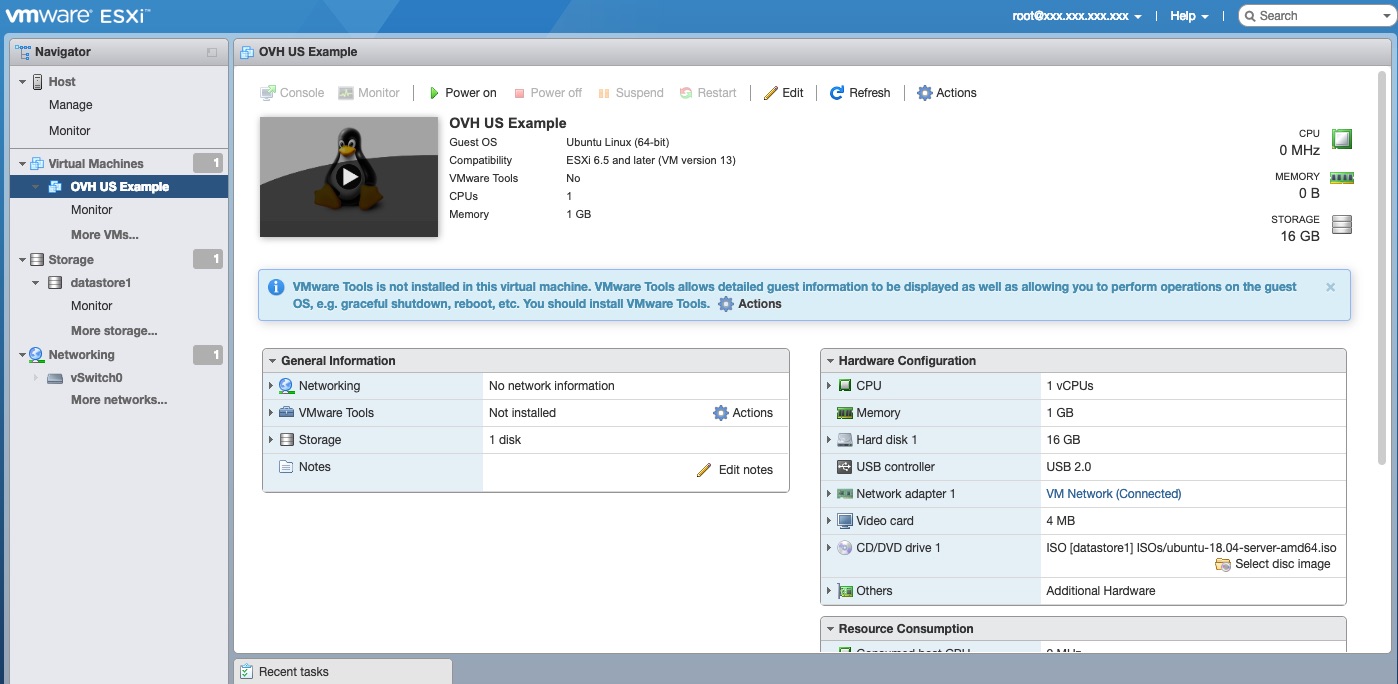
- #Installing vmware vsphere 6.5 license key
- #Installing vmware vsphere 6.5 upgrade
- #Installing vmware vsphere 6.5 software
- #Installing vmware vsphere 6.5 trial
VMware Site Recovery Manager 6.5 is a disaster recovery and business continuity solution from the VMware, which automates the transfer of virtual machines to a local or remote recovery site.
Diff VCenter 5.5 appliance and vCenter on WIndows. #Installing vmware vsphere 6.5 software
For more information on vSphere 6.5 see the official resources vSphere 6.5 Documentation Centre, vSphere 6.5 Release Notes.ĮSXi can be installed manually, which we will do in this post, scripted, or through Auto Deploy.īoot from the ISO either by using local media or the server remote management software (iLO, DRAC, IMM). The catalogue of paid learning courses and certification can be viewed at vSphere 6.5 Training or vSphere 6.0 Training. VMware offer a free 3-hour elearning course on Data Centre Virtualisation Fundamentals. #Installing vmware vsphere 6.5 license key
The download link is the same for all editions of ESXi 6.x, available features are defined by the license key installed. To improve performance ESXi should be installed on disk(s) separate to those used to store virtual machine files, management network traffic should use dedicated NIC(s). If a smaller disk is used then the /scratch partition will be located on the ESXi host ramdisk, which can hamper performance. Local disk, SAN, or iSCSI LUN: a 5.2 GB disk is required for the VMFS volume and a 4 GB scratch partition. USB or SD card: minimum of 4 GB to allow for extended coredump partition, VMware recommend 16 GB for additional flash cells to prolong the life of the boot media. ESXi requires a boot device that is a minimum of 1 GB in size, although additional capacity is recommend:. Sufficient capacity and redundancy should be provided for network and storage resources. ESXi 6.x requires at least 4 GB of physical RAM, however 8 GB is recommended to run virtual machines. To provide virtualisation functionality the NX/XD bit must be enabled for the CPU in the BIOS, 圆4 CPUs should also have the support for hardware virtualisation (Intel VT-x or AMD RVI) feature enabled. ESXi 6.x supports 64-bit x86 processors released after September 2006. A host machine with at least 2 CPU cores is required. 
ESXi 6.x supports a wide range of hardware across multiple vendors, however before proceeding check the hardware compatibility guide.Before the trail expires a valid license key must be installed.
#Installing vmware vsphere 6.5 trial
The default license installed with ESXi provides Enterprise Plus trial capabilities for a maximum of 60 days. ESXi is available as part of the vSphere product suite with a rich feature set ranging from Standard to Enterprise Plus with Operations Management compare editions. ESXi is available as a standalone free hypervisor, you will need to sign up for an account with VMware. The graphic on the left below represents traditional workloads running on dedicated servers, the graphic on the right represents a virtualised environment with consolidated workloads. 

By virtualising compute we can benefit from a smaller datacentre footprint, less use of power and other hardware such as networking equipment, cost savings from server consolidation, better utilisation and management of existing resources, improved disaster recovery and availability. ESXi optimises the use of a physical servers resources to be logically shared out for virtual machines. VMware ESXi is a bare-metal hypervisor deployed as a stateful or stateless install. Finally, the Windows vCenter Server and external PSC deployment models are now depreciated and not available with vSphere 7.0.
#Installing vmware vsphere 6.5 upgrade
For more information see the VMware Upgrade Matrix. Upgrade to vSphere 7 can be achieved directly from vSphere 6.5.0 and above, whereas vSphere 6.0 requires an intermediate upgrade to 6.5 or 6.7 first.

VMware vSphere 6.0 reached end of general support 12 March 2020, with vSphere 6.5 scheduled for 15 October 2022, both referenced in the VMware Lifecycle Matrix.








 0 kommentar(er)
0 kommentar(er)
